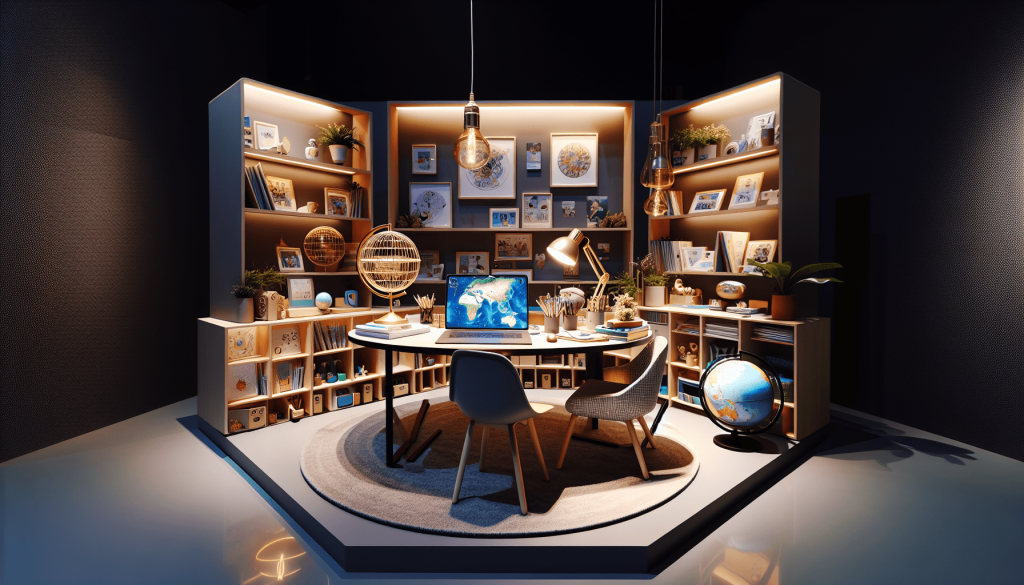Have you ever found yourself wondering how to effectively drive sales without breaking the bank on a dedicated sales team?

Understanding the Sales Challenge
In today’s fast-paced business environment, many entrepreneurs and small business owners are grappling with the challenge of growing their customer base. You might be thinking, “How can I compete with larger companies that have extensive resources for marketing and sales?” The truth is, you don’t necessarily need a large team to excel in sales.
Why Traditional Sales Teams Are Costly
Building a traditional sales team involves several expenses that can quickly add up. You have salaries, commissions, training, and benefits to consider. Moreover, there’s the onboarding process, which requires time and effort that you may not have.
Hidden Costs of a Sales Team
- Recruitment Fees: Hiring salespeople often means paying recruitment agencies or spending your own time interviewing candidates.
- Training Programs: Even the best candidates need training to understand your product or service.
- Employee Turnover: High turnover rates can lead to ongoing recruitment and training costs.
These factors can create considerable strain on a small business budget, leaving you feeling overwhelmed.
What Is XYZ AI Bot?
Enter the world of AI solutions—a breath of fresh air for businesses like yours. XYZ AI Bot is designed to handle customer interactions and sales in a cost-effective manner. By employing artificial intelligence, this tool can manage conversations, take orders, and even collect customer data, all in real time.
The Role of AI in Sales
- Automation: With the XYZ AI Bot, mundane tasks such as responding to FAQs and scheduling meetings can be automated.
- 24/7 Availability: Unlike a traditional team, the bot doesn’t need breaks or days off.
- Scalability: As your business grows, scaling the bot’s capabilities can often be done without incurring huge costs.
Key Features of XYZ AI Bot
So, what makes XYZ AI Bot stand out? Here are some fantastic features that could change the way you approach sales:
Intelligent Conversations
Recognizing the importance of personalized interactions, the XYZ AI Bot uses Natural Language Processing (NLP) to understand customer inquiries and respond in a conversational tone.
Customer Insights
The bot collects data on customer preferences and behavior, allowing you to tailor your marketing strategies effectively. You get actionable insights that can improve your service offerings.
Integration with Existing Tools
No one likes to juggle multiple platforms, and that’s why XYZ AI Bot easily integrates with popular CRMs, email marketing services, and e-commerce platforms.
Advantages of Using XYZ AI Bot
Let’s break down some advantages you can enjoy by implementing this AI bot in your sales strategy.
Cost-Effectiveness
If you’re starting or running a small business, keeping costs manageable is vital. The XYZ AI Bot provides a more affordable alternative to traditional sales teams.
Increased Efficiency
Imagine having a sales assistant that works around the clock without getting tired! You’ll have more time to focus on higher-level strategies while the bot handles routine tasks.
Enhanced Customer Experience
With quick responses and personalized interactions, customers will appreciate the instant gratification they’re getting. This can lead to higher satisfaction rates and repeat business.
Specialized Sales Techniques
You might be surprised to learn that AI is capable of implementing specialized sales techniques based on data analysis. This means every interaction is optimized for the best possible outcome.
Setting Up XYZ AI Bot for Your Business
Getting started with implementing the XYZ AI Bot doesn’t have to feel daunting. Here’s a step-by-step guide to help you through the setup.
Step 1: Evaluate Your Needs
Before diving in, take some time to identify your unique sales challenges and what you aim to achieve. Do you want to improve customer engagement? Increase conversion rates? Make a list of your priorities.
Step 2: Choose Your Plan
XYZ AI Bot usually offers several pricing tiers. Depending on your budget and needs, select the plan that best fits your situation.
Step 3: Customize Your Bot
Personalize your bot’s responses to align with your brand voice. You can use pre-existing templates or create your own from scratch to ensure a consistent brand message.
Step 4: Test and Optimize
Once set up, trial runs are crucial. Monitor its interactions and continue optimizing the bot’s capabilities based on real-time feedback from customers.
Case Studies: Successful Implementations
Let’s take a look at some examples of how other businesses have transformed their sales processes with the help of XYZ AI Bot.
Case Study 1: A Local Restaurant
A small restaurant struggled to manage reservations and handle customer inquiries during peak hours. Utilizing the XYZ AI Bot, they automated booking and received a staggering 30% increase in customer satisfaction ratings.
Case Study 2: An E-Commerce Store
An online store integrated XYZ AI Bot to handle customer inquiries about shipment statuses and product details. The result? They saw a 40% boost in sales within the first quarter of implementation, largely due to improved customer service.
Common Concerns About AI in Sales
It’s completely normal to have concerns about replacing human interaction. Let’s address some common thoughts.
Job Displacement
While it’s true that AI can handle specific tasks, it doesn’t have to replace your entire sales team. Instead, think of it as adding a valuable tool to your toolkit that frees up your staff to focus on more complex tasks.
Customer Connection
You might worry that a bot can’t replicate the emotional intelligence and empathy of a human. Fortunately, by designing your AI with a friendly, conversational tone, you increase the chances of making customers feel positive about their interactions.
Frequently Asked Questions
You probably still have questions about implementing an AI bot in your sales strategy. Let’s clear up some of the most frequently asked questions.
How Much Does XYZ AI Bot Cost?
Pricing may vary based on your business needs. Generally speaking, it can be significantly cheaper than hiring a full-time sales representative.
What Type of Training Is Required for Employees?
Minimal training is needed. Your team will require some familiarity with the bot’s functionalities, but support materials and tutorials are usually provided.
Can I Upgrade as My Business Grows?
Absolutely! Most platforms offer scalable solutions that can adapt as your business evolves.
Final Thoughts: Is It Time for You to Take the Plunge?
You’ve faced the challenge of managing a sales process without the costs associated with hiring a full team. Implementing XYZ AI Bot could be a game changer for you. If you’ve understood the advantages, features, and setup processes, you are well on your way to revolutionizing your sales strategy.
Testing the waters with an AI solution might just be the refreshing change your business needs. With all the benefits that come with having an intelligent assistant tackling customer interactions, you can focus on strategic decisions and growth opportunities.
So, are you ready to let XYZ AI Bot do the work for you? Embracing this technology could set the stage for unparalleled growth!
XYZAIBot …






 A Brief History of Engagement Rings
A Brief History of Engagement Rings The setting enhances the beauty and security of the gemstone. Popular choices include:
The setting enhances the beauty and security of the gemstone. Popular choices include: Webinar marketing uses online seminars or presentations as a platform to engage with an audience. These sessions are typically live, allowing real-time interaction, but can also include pre-recorded elements. Webinars are versatile and can serve various purposes, such as:
Webinar marketing uses online seminars or presentations as a platform to engage with an audience. These sessions are typically live, allowing real-time interaction, but can also include pre-recorded elements. Webinars are versatile and can serve various purposes, such as: Conduct a trial run to ensure everything runs smoothly, from technology to timing. Prepare for technical issues with backup plans.
Conduct a trial run to ensure everything runs smoothly, from technology to timing. Prepare for technical issues with backup plans.